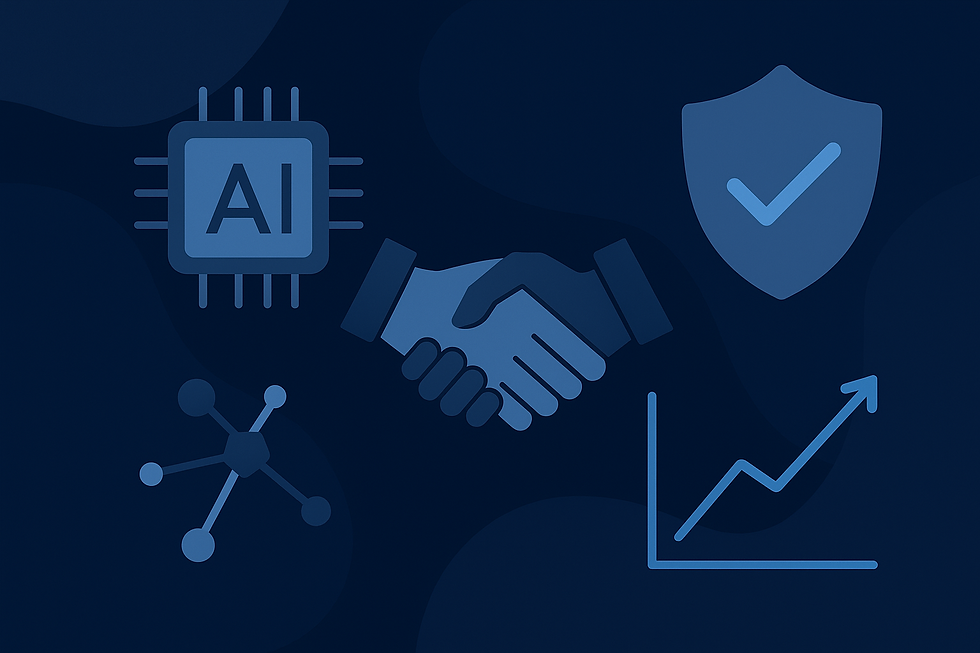Ethics by Design: Embedding Values into Machine Learning Pipelines.
- jvourganas

- Jun 13
- 4 min read

Abstract
Ethics in artificial intelligence is often framed as a reactive discipline, a last-mile audit or compliance checkpoint. But with the rising socio-technical complexity of ML systems, this reactive framing is no longer tenable. Ethics by Design repositions moral and social values as upstream components of the ML lifecycle. Drawing from the latest advances in fair representation learning, causality-aware modeling, value-sensitive design, and human-centered evaluation, this article offers a conceptual and technical roadmap for embedding ethics directly into the heart of machine learning pipelines. It is written for both scholars and practitioners seeking not just to mitigate harm, but to architect systems that affirmatively advance justice, inclusivity, and transparency.
Introduction: From Guardrails to Foundations
Too often, ethics in AI is bolted on late, a reactive mechanism triggered only after performance thresholds are met. But in systems that actively shape societal opportunity, this approach is both intellectually inadequate and operationally fragile. As machine learning expands into health diagnostics, hiring platforms, criminal justice, and financial access, it no longer suffices to ask: Is it working? The critical question becomes: For whom, in what context, and at what cost?
Ethics by Design offers an inversion. It starts not with what a model can do, but what it should do. It demands that values such as fairness, agency, privacy, and transparency be designed into the data, the models, the metrics, and the interfaces, from the very beginning.
The Pipeline Reimagined: Ethical Interventions at Every Stage
Problem Formulation
The ethical trajectory of an ML system is set in motion at the moment a problem is framed. Using frameworks like Value Sensitive Design [1],[2], stakeholders’ values, needs, and risks are made explicit before a single line of code is written. This early engagement shapes the scope of technical possibilities by identifying who stands to benefit or be burdened, and what trade-offs must be made visible. Participatory workshops with affected users shift the design ethos from extractive to collaborative, ensuring that problem definitions are not merely optimized for feasibility, but aligned with dignity and justice.
Data Curation and Labeling
Ethical machine learning starts with ethical data. Beyond technical validity, data must be interrogated for how it reflects historical power asymmetries. Techniques like datasheets for datasets, provide transparency into collection conditions, sampling strategies, and potential harms [3]. Stratified sampling and counterfactual data augmentation help prevent underrepresentation of marginalized subpopulations. Finally, annotation processes must be audited for bias, including labeler incentives, training, and cultural frames [4]. A biased label is not simply a data flaw, t’s an ethical breach.
Model Architecture and Training
Model design choices have value-laden implications. Approaches such as fair representation learning [5], [6], and adversarial debiasing, [7], make fairness objectives integral to the learning process rather than post-hoc filters. Causal frameworks, add a critical dimension, helping models learn structural relationships rather than surface correlations [8], [9]. These techniques embed moral reasoning into technical design, enabling models that are not just accurate but accountable to their social context.
Evaluation and Validation
A system that performs well in aggregate may still fail entire communities. Ethical evaluation involves multi-metric assessment, where fairness indicators like equalized odds, demographic parity, and counterfactual fairness [10] are monitored alongside standard metrics. Stress-testing with perturbed data and edge cases surfaces hidden vulnerabilities. Documentation artifacts like model cards [11] establish traceability, making assumptions, limitations, and ethical judgments transparent for downstream users, auditors, and regulators.
Deployment and Monitoring
Ethics does not end at deployment, it becomes operational. Real-world use introduces drift, feedback loops, and unanticipated consequences. Systems should include mechanisms for user recourse and contestability [12], enabling individuals to challenge, appeal, or understand decisions that affect them. Fairness drift should be monitored continuously, with retraining triggers built into the pipeline. Interfaces should empower users with transparency and agency, moving the system from opaque automation to accountable augmentation.
Bridging Theory and Practice: Toward Institutional Adoption
Despite increasing awareness, implementation gaps persist. Ethics by Design requires cultural transformation, not just tooling. Organizations must:
Create interdisciplinary governance teams with equal voice.
Incentivize documentation, traceability, and introspection in developer workflows.
Adopt ethical KPIs alongside performance metrics.
Align with global policy frameworks (e.g., OECD AI Principles, EU AI Act, UNESCO Ethics of AI).
Inspirational Provocation: From Compliance to Imagination
We must stop thinking of ethics as a constraint and start seeing it as a site of design innovation. What if fairness wasn't a boundary condition, but a creative lens? What if audits weren’t threats, but rituals of reflection? What if our metrics of success included equity, empowerment, and epistemic humility?
To lead in the next decade is to design not only systems that scale, but systems that care.
Designing for the World We Want
Ethics by Design is not about fixing broken algorithms, it’s about challenging broken assumptions. It is a shift from risk aversion to social ambition. By embedding values upstream, we not only prevent harm but create space for machine learning systems that affirm dignity, challenge injustice, and empower the marginalized.
Building ethical AI is not about being perfect. It’s about being principled, intentional, and brave enough to design for a world worth building.
References
[1] Friedman, B., Kahn, P. H., & Borning, A. (2002). Value Sensitive Design: Theory and Methods. University of Washington Technical Report.
[2] Umbrello, S., & van de Poel, I. (2021). Mapping value sensitive design onto AI ethics. Ethics and Information Technology.
[3] Gebru, T., et al. (2021). Datasheets for datasets. CACM.
[4] Denton, E., Hanna, A., et al. (2021). On the harms of over-exclusion in dataset documentation. FAccT.
[5] Zemel, R., et al. (2013). Learning fair representations. ICML.
[6] Creager, E., Madras, D., Jacobsen, J., et al. (2021). Algorithmic recourse under distributional shift. NeurIPS.
[7] Zhang, B., Lemoine, B., & Mitchell, M. (2018). Mitigating unwanted biases with adversarial learning. AIES.
[8] Pearl, J. (2009). Causality: Models, Reasoning and Inference (2nd ed.). Cambridge University Press.
[9] Madras, D., et al. (2019). Fairness through causal awareness. NeurIPS.
[10] Kusner, M., et al. (2017). Counterfactual fairness. NeurIPS.
[11] Mitchell, M., et al. (2019). Model cards for model reporting. FAT*.
[12] Wachter, S., Mittelstadt, B., & Russell, C. (2017). Counterfactual explanations without opening the black box. Harvard JL & Tech.




Comments